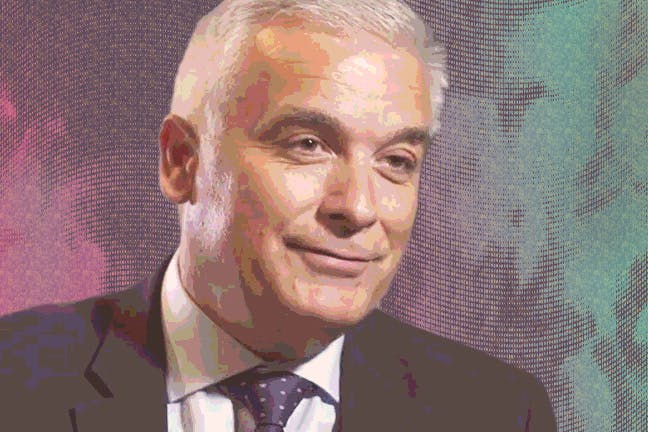The integration of technology is imperative to closing the trade finance gap
Note: André Casterman wrote this article in his role as the CEO of the Trade Finance Distribution Initiative. It was published in Finance Digest.
The global trade finance gap is continuing to grow, reaching a record $2.5tn in 2022, up from $1.7tn in 2020. Essential to the movement of goods across global markets, the demand for trade finance has vastly outstripped supply. SMEs across the world and businesses in emerging markets are in serious need of capital in order to run, and in turn, create jobs and economic growth, yet the financing is often hard to access. The pandemic and its knock-on effects on global markets and supply chain logistics have accelerated the growth of the trade finance gap, and continuous rising costs since then, as well as a lack of digitisation and liquidity have left the sector unable to combat this.
To make trade finance assets more accessible, there must be an easier route to investment for institutional investors, reducing the sector’s reliance on banks and driving liquidity.
Driving capital
By making trade finance assets available on capital markets, institutional investors can access trade finance as an investable asset class and reach a broader base of investors from around the world. This helps support global trade as a whole, increasing the pool of available funds in the market. In turn, this injects liquidity into the market, making it easier for firms to access the financing needed.
Opening up investor participation in trade finance will also make the trade finance market more resilient to global macroeconomic factors, particularly in periods of economic downturn where banks become more risk averse. Indeed, with alternative investors providing a diversified source of funding for trade finance, the reduced risk and increased liquidity can encourage asset originators to provide more funding to businesses in need.
Transforming assets
However, to make trade finance accessible to institutional investors, these assets must be issued as tradable securities or notes. By transforming these illiquid assets into liquid securities, these securities can be structured into different tranches with varying degrees of risk and return. Institutional investors can then purchase these securities based on their investment needs, opening trade finance up to the secondaries market.
Securitisation isn’t just essential for alternative investors. With Basel III introducing stricter capital and liquidity requirements, trade finance activities have become more costly for banks, and many have turned to securitisation as a way to obtain capital relief.
Digital trading
To take things one step further, the securitisation of trade finance has allowed for further innovation in the sector. At this year’s Trade Finance Investor Day event in Hertfordshire, blockchain company XDC Foundation presented the value of tokenisation in trade finance, where assets are digitalised into digital security tokens. Where securities help broaden the investor base to raise capital for trade finance markets, digital tokens can make trade finance assets even more efficient, transparent, and accessible for investors.
XDC Network is a layer 1 blockchain, and like other market leaders such as Stellar and Ethereum, has tokenised US treasury bonds – a market that is now valued over $650m. Alongside XDC Network and Securitize, Tradeteq recently developed Yieldteq which issues USTY and provides exposure to U.S. Treasury bond ETF. The USTY token allows investors to more easily invest in and own real-world assets. The total value of all tokenised real-world assets is now over $3bn, with investors appreciating the reduced costs from removing middlemen, ease of accessibility anytime, anywhere, and the transparency of transactions.
The market for tokenisation will only continue to grow with the recent passing of the Electronic Trade Documents Act in the UK, which made the UK one of the first countries to legitimise the use of digital trade documents and payment obligations.
The marketplace solution
Marketplaces are key to simplifying trade finance deals. Tradeteq, for example, has its own marketplace which has its own built-in securitisation-as-a-service, and standardises the operations involved in trade finance, in particular due diligence and note offering processes.
Using the Tradeteq platform, asset sellers can list offers to institutional investors, helping match sellers and investors quickly, streamlining processes and reducing costs. It is marketplaces such as these that show how technology can enhance trade finance dealmaking and improve liquidity in the market.
Such transformative measures are critical to improving cash flow within the trade finance market and addressing the global trade finance gap. As businesses around the world look to scale-up, innovate and drive growth, closing the trade finance gap can help build a more inclusive, resilient trade finance ecosystem.
https://www.bloomberg.com/news/articles/2023-09-05/global-trade-finance-gap-at-record-2-5-trillion-says-adb
https://www.techopedia.com/value-of-tokenized-us-treasuries-surges-by-600-since-january
https://beincrypto.com/real-world-assets-value-high/
Other content you might like
XDC Weekly
XDC Weekly April 13th, 2025 - April 19th, 2025
XDC Weekly
XDC Weekly April 6th, 2025 - April 12th, 2025
XDC Weekly
XDC Weekly December 15th - December 21st, 2024
